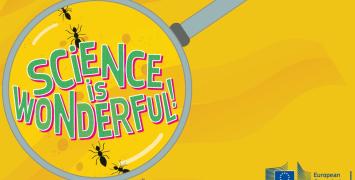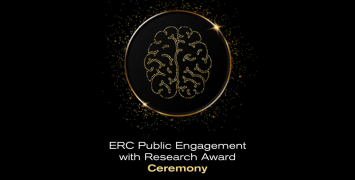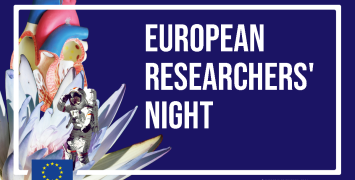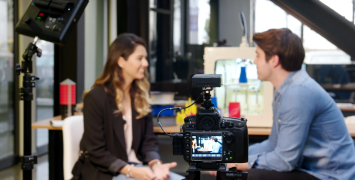Busting the myths about ocean plastic
There is much more to marine plastic pollution than meets the eye. In his quest to set the record straight about this litter, Erik van Sebille, an oceanographer at Utrecht University, is garnering international interest from the public, media, schoolchildren and policymakers alike. His passion for public outreach has led him to become one of the first laureates of the ERC Public Engagement with Research Award. We interviewed him to find out more about his winning media relations strategy and the benefits public engagement has brought to his research.

To start with, could you tell us a bit about your ERC-funded project?
Marine plastic pollution is a major environmental problem. Yet only about 1 % of all plastic that has ever gone into the ocean has been mapped. The other 99 % is ‘missing’. The ultimate goal of my project, TOPIOS (Tracking of Plastic in our Seas), is to create a 3D map of where plastic pollution entering our oceans is ending up in order to understand its environmental impact and contribute to better evidence-informed policymaking. The project involves tracking simulated plastic particles with state-of-the-art hydrodynamic ocean models to compute maps of their pathways in oceans, towards coastlines and ingestion by sea life.
Watching this video you are accepting Youtube cookies policy
As part of your project, you actively engage with journalists, policymakers and the public to bust myths about the plastic pollution problem. How did you come to this idea?
While there is a lot of public interest in the growing marine plastic pollution problem, and quite rightfully some public outrage on the devastating consequences of a consumerist society, there are also many falsehoods circling which can negatively sway public discourse and ultimately policy decision-making. During a European Parliament event on marine plastics, I came to the realisation that my public outreach efforts would need to focus on separating scientific fact from fiction.
What did your public engagement with research activities consist of? What did you do and how did you do it?
Inspired to set the record straight, we created a website debunking the top 7 myths about ocean plastic, including the perpetuating myth about unfixable, harmful plastic islands. My team and I then proactively reached out to media to correct misinformation and used media ‘hooks’ like World Oceans Day to hold press interviews which caught a lot of European and international interest. Through regional media coverage, we were able to shift the focus from far away problems like the Great Pacific Garbage Patch in the middle of the Pacific Ocean and bring the marine plastic pollution problem home by making local communities aware of their own impact.
Can myth busting keep the public interested?
Some of the myths circling are downright wrong and this is very dangerous in public discourse. For example, quite a few people think that there is an ‘island of plastic’ in the middle of the Pacific. It suggests we could just go out there and scoop all the plastic up; and problem solved! But most of the plastic there is far too small to be collected. I believe that scientific fact makes the public debate both deeper and more interesting. In fact, in my view, debunking myths can even increase public interest.
I find that coverage in newspapers and key media can sometimes be more effective than publishing in top journals like Nature and Science
What benefits did public engagement with research efforts bring you and your team?
I am not the kind of academic who wants to do my work alone in a lab. The reason I became a scientist was to share my research, passion for the ocean and to help society. A proactive media strategy is helping raise the visibility of my research among my peers, other scientists and the public on a worldwide scale. I find that coverage in newspapers and key media can sometimes be more effective than publishing in top journals like Nature and Science. I have also been incredibly lucky to receive support from people in my institution who encourage me to continue my public engagement.
An effective media relations strategy can take time to harness but once in place, it can be very effective in informing and shaping policymaking as key decision-makers also read press releases and newspapers. Media coverage and opinion pieces in key media in Brussels have definitely influenced how the EU now thinks about marine plastic.
Would you advise other ERC grantees to invest more in public engagement with research? Do you think it is worth it?
I would say only do public outreach if you really want to do so. It should not be a chore! I believe there should be a ‘rebalancing’ of how we view academic life. Rather than having academics expected to excel in researching, teaching, managing and communicating, I think institutions should give academics some flexibility and the freedom to focus on just a subset of these.
I enjoy watching schoolchildren’s faces light up when I speak to them about the wonders of the ocean
Your outreach involves engaging with schoolchildren. Can you tell us more about this aspect of your activities?
I enjoy watching schoolchildren’s faces light up when I speak to them about the wonders of the ocean. Schoolchildren are also the generation who will inherit this problem so it is important to engage with them, teach them and listen to the original solutions they come up with themselves. Engaging with schoolchildren creates a link between science and this younger world. I always prioritise time to visit schools and support schoolchildren as much as possible.
How did you come up with the idea to use cartoons on your website?
I have to admit that this was actually not part of the strategy. We were incredibly lucky to have a very skilled master student with illustration skills help us with our website. She created the visually appealing illustrations as a hobby, which turned out to work very well for all audiences.
BIO
Erik van Sebille is an oceanographer and climate scientist. His research focuses on how ocean currents transport heat, nutrients, marine organisms and plastic litter. He builds computer models to simulate the transport of this ‘stuff’ in the ocean. As a strong science communicator, Erik appeared on international television, radio and in newspapers. He is an associate professor at Utrecht University.






